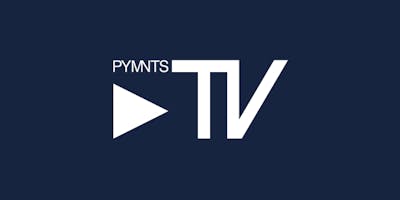Engineering
Team structure
At Form3, we are firm believers that our teams should have autonomy and ownership of their work, and of the entire platform too. Our teams are responsible for every aspect of the work they are delivering, including testing, deployment and infrastructure. This gives our engineers a wide variety of challenges and growth opportunities.

Markets
Our markets teams build and run critical payment processing services in the UK, Europe and internationally. We support a wide variety of payment processing schemes such as FPS, BACS, SEPA, SWIFT and more.
Key technologies: Go, Java
Here are some of the exciting things they do:
01
Implement and maintain the payment gateways which link our core platform with all the external payment schemes
02
Wrangle a wide variety of different integration technologies into our secure, resilient, cloud-native platform
03
Build microservices in Go (with the occasional older Java microservice thrown in), running on ECS or Kubernetes
04
Scale processing to millions of payments a day, while exceeding strict performance and reliability benchmarks
05
Work closely with the product and business teams in each market to build complete customer propositions

Transaction Management
Our Transaction Management team builds and maintains shared services across the platform while being responsible for our value-add proposition to the customers as well
Key technologies: Go, Java, Kubernetes, NATS Jetstream, Cockroach DB, large distributed systems
Here are some of the exciting things they do:
01
Develop and maintain shared functionality on our secure, multi-tenant systems through a mix of Go development and some older Java microservices that we are actively migrating to Go.
02
Continuously improve our low-latency, high-throughput distributed payment processing architecture
03
Build and support systems in active/active multicloud deployments, frequently dealing with CAP theorem limits
04
Create and maintain an orchestration engine allowing customers to participate in processing individual payments in real time

API Experience
API Experience’s mission is to bring our single, unique proposition to the world by installing consistent principles that protect and evolve our USP. Our vision is to deliver a consistent, best-in-class experience to all Form3 customers.
Key technologies: Go, Kubernetes, CockroachDB, NATS
Here are some of the exciting things they do:
01
Build and run high throughput low latency services that handle the core business of our payments processing platform.
02
Focus is on scalability, availability and performance.

Platform
Our platform teams build, run and maintain the infrastructure behind our cloud native systems. The teams play a crucial role ensuring the reliability and scalability of our entire platform.
Key technologies: Terraform, Kubernetes, CockroachDB, NATS, Cilium, AWS, GCP, Kong, Vault
Here are some of the exciting things they do:
01
Deliver and maintain our highly resilient, highly available, secure cloud infrastructure, networking and platform components
02
Use infrastructure-as-code (Terraform) to automate the build and maintenance of standardised stacks across multiple cloud providers (AWS, GCP, private cloud)
03
Work with Kubernetes and cloud-native data and messaging services such as Cockroach DB, NATS and Cilium to build our next generation platform
04
Design, build and maintain a highly resilient cross-cloud architecture to allow us to run active-active across multiple cloud providers
05
Build and maintain our private cloud stack running Kubernetes in our own data centres, adapting all our cloud-native technologies to this environment
06
Design, build and maintain a platform where any component (from networks, routers, servers, to OS and microservices) can be removed, replaced or upgraded without causing downtime

R&D Operations
Internal tools drive the productivity of our entire engineering team, and help us deliver software securely and at speed. Our tooling teams build and maintain our extensive developer tooling ecosystem.
Key technologies: Terraform, Kubernetes, Go, Github, AWS, Grafana, ELK
Here are some of the exciting things they do:
01
Build, deploy and maintain all Form3’s internal tooling using Go, Terraform and various open-source tools
02
Work together with other teams to identify, gather requirements and deliver tools that continually improve our development and delivery processes
03
Continually improve and scale our CI/CD tooling, logs, metrics, alerting and tracing platform, and remote access technologies
04
Work closely with InfoSec to secure all aspects of our internal tooling
05
Have a passion for software development best practice, and understand how tooling can support that

Data services
Our teams in the Data Services business line are providing services both internally to our teams (our internal customers) as well as externally to our (external) customers, to enable and support them on effectively extracting the most possible value out from their data.
Key technologies: Go, Java, Terraform, Kubernetes, CockroachDB, NATS, Iceberg
Here are some of the exciting things they do:
01
Address and provide solutions to cross-cutting challenges that span across the organisation as well as extend to a global scale
02
Design, build and maintain a Financial Crime Prevention Orchestration Platform as a Service for external customers to detect fraudulent transactions in their Banking systems, and to potentially prevent crimes and scams that has not only monetary but emotional impact as well on a global scale
03
Design, build and maintain a DataMesh Platform as a Service for internal customers (other teams within the company) to support them with the platform, and the appropriate processes and tooling to efficiently access, share, manage and maintain high-quality data products for internal as well as external use.

InfoSec
Form3 have an extensive team of defensive and offensive engineering teams that work together with our security officers.
Our security teams work closely together with all our other engineering teams to ensure that we maintain the highest standards of security on our platform.
Catch up on our latest blog posts
Blogs · 10 min
Dangling Danger: Route53's Flawed Dangling NS Record Protection
A subdomain takeover is a class of attack in which an adversary is able to serve unauthorized content from victim's domain name. It can be used for phishing, supply chain compromise, and other forms of attacks which rely on deception. You might've heard about CNAME based or NS based subdomain takeovers.
October 27, 2023
Blogs · 4 min
Applying the Five Ws to Incident Management
In this blogpost, David introduces us to the five W's of information gathering - Who? What? When? Where? Why? Answering the five Ws helps Incident Managers get a deeper understanding of the cause and impact of incidents, not just their remedy, leading to more robust solutions. Fixing the cause of an outage is only just the beginning and the five Ws pave the way for team collaboration during investigations.
July 26, 2023
Blogs · 4 min
.tech Podcast - All about conference speaking
Patrycja, Artur and Marcin are engineers at Form3 and some of our most accomplished speakers. They join us to discuss their motivations for taking up the challenge of becoming conference speakers, tell us how to find events to speak at and share their best advice for preparing engaging talks. They offer advice for new and experienced speakers alike.
July 19, 2023








